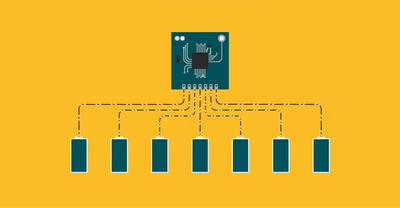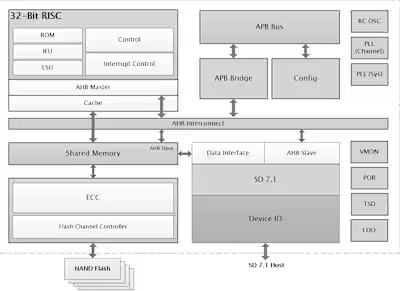What Is FinOps? Understanding FinOps Best Practices for Cloud

What does FinOps mean? It seems everyone has a different way of defining it, but there’s one commonality that rings true: FinOps is both a discipline and a cultural practice. Or, as Brian Adler, Flexera senior director for cloud market strategy, calls it, “It’s both what you’re doing and how you’re doing it.”
Perhaps more important is understanding what FinOps isn’t.
It’s not a technology. It’s not as simple as buying new tools or adopting a new platform, although those can help. And contrary to what many people first think, FinOps is not about saving money. “Nor is it about reducing cloud use,” said J.R. Storment, executive director of The FinOps Foundation. “Instead, the point of FinOps is to get the most value out of every dollar you spend on cloud.”
In other words, FinOps is about spending your money most cost-effectively. Yes, this might mean spending less money, but it also might mean spending more money and making more money.
Defining FinOps: It’s a Discipline
Cost-effective spending may seem like an obvious principle, but for most companies, it’s a new discipline to learn when it comes to the cloud.
Across enterprises and SMBs (small- and medium-sized businesses), the massive cloud migration continues, with 51% storing data in the public cloud today. And while cloud spending certainly accelerated during the COVID-19 pandemic, it’s not showing any signs of slowing soon, with worldwide spending on public cloud services poised to hit $1.35T by 2027, according to the International Data Corporation (IDC) Worldwide Software and Public Cloud Services Spending Guide.
It’s this zealous growth that may just be part of the problem. “Day 1 in the cloud, people tend to get more than they need,” says Adler. “Then after that, they don’t really touch their cloud setup again — because if it ain’t broke, don’t fix it.” This approach, however, leaves no room for optimization. Worse, it allows cloud use to build up over time, leaving companies paying for storage they don’t need.
Now, some companies are moving beyond the feeding frenzy early days of migration and are beginning to realize it’s time to fix what they started. In other words, it’s time to pivot from simply focusing on using the cloud to learning how to optimize the cloud.
FinOps Is Also a Culture
Such fast-paced cloud migration has also significantly impacted the way teams work together, notes Storment: “Before, engineering teams were typically given hardware that would depreciate after a few years. But things move a lot more quickly now. With the cloud, you’re literally being billed by the second at the resource level with billions of individual charges per month with data from different cloud providers.”
This influx of tiny, detailed charges can easily overwhelm and confound finance teams. But the engineering teams to whom they turn for help aren’t used to having to manage the books.
And thus, companies arrive at the cultural component of FinOps, what Storment calls, “getting disparate teams in an organization working together in a way that they haven’t historically had to do.”
Challenges to Achieving a Successful FinOps Strategy
Naturally, learning a new discipline and adopting a new internal culture doesn’t come without difficulties. And while the challenges are plentiful, The FinOps Foundation’s 2023 State of FinOps Report has identified the main three:
“Getting to Unit Economics”
“Organizational Adoption of FinOps”
“Empowering Engineers to Take Action”
Leading the battle is getting to unit economics, or identifying your company’s unique gold-standard metric. Unfortunately, this task is a pesky combination of important yet elusive. As Adler explains, “For every business, there’s one thing you can measure your efficiency against. “It’s different for every company, though, and it’s hard to identify.”
But homing in on your company’s gold-standard metric is key to understanding the overall efficacy of its FinOps strategies. In most cases, measuring this metric will prove a better indicator of success than simply noting how much money you’ve spent or saved.
Metrics, however, can’t alone help companies develop a good FinOps strategy. Organized communication is also a big piece of the puzzle.
Remember that the FinOps definition also encompasses making a cultural shift — which is never easy. Across industries, most teams are used to operating under a CapEx model, which is now being pushed out by consumption-based spending. “Before the big adoption of cloud, procurement and finance teams only talked to engineering teams every few years when they needed to make a purchase,” says Adler. “But now, they’re talking to each other monthly, weekly, or even daily. It’s a difficult transition, communication-wise, and both sides need new policies, processes, and tools to support them.”
But as Storment was quick to caution, it takes a lot more than new tools to spearhead a successful FinOps practice. Teams’ mindsets and daily workflows need to change — perhaps most notably, as it applies to FinOps engineers.
“Instead of being told, ‘Hey, you’re doing that wrong. You’re wasting money,’ engineers need to be empowered. This means giving them both the tools and the permission to delete, downsize, and rightsize resources,” affirms Adler. “It’s about more than just identifying problems; it’s about empowering the folks who are initially doing the provisioning so they can take action to optimize.”
Adler and Storment agree that there is no one fix-it tool companies can jump on; rather, the foundation for a successful FinOps strategy is adopting a cultural shift. Still, the right tools can help you get there.
Flexera has been in the IT asset management space for decades. Today, their Flexera One platform offers unique solutions to help teams tackle changing communication and cultural patterns. Adler explains: “To help implement the FinOps process, we allow you to create different user personas. For example, you can log in as an engineer and be empowered to take action. Or you can log in as an accountant with view-only permissions so you can look at cost-center roll-ups, individual teams’ spends, and all the data that matters to you to pass on to management.”
FinOps Practices: A Shift in Priorities
The very existence of new tools like Flexera One show that companies are taking note of FinOps challenges and searching for ways to pivot, which Storment says speaks to how important Finops has become: “Before, a big company wouldn’t have a FinOps team because it wasn’t considered important enough — there would be a few people or just one person. But now, those same companies have over a dozen people on their FinOps team.”
As cloud spending continues to grow, more companies have achieved the scale to focus on education, i.e., how to get thousands of engineers to operate differently than they have been for years. It’s not an easy feat, but many in the industry are enthusiastic about the possibilities. “Eventually,” says Storment, “it will stop being called FinOps. It will just be the new way.”
Until then, small but steady progress is being made. After acknowledging the need to adopt the FinOps discipline, encourage an internal cultural shift, and create a dedicated FinOps team, more mature organizations are now focusing on the next natural steps: resource utilization and rightsizing.
“Basically, there are two big levers you can pull in FinOps,” explains Storment. “Use less or pay less for what you’re using.”
In the past, it was a lot easier to do the second because organizations could rely on negotiating discounts and better rates with cloud providers — and they wouldn’t have to bother engineers about making changes to their architecture.
But things are different now. Macroeconomic changes have made saving money the new #1 priority. And because most organizations have already maxed out on discounts and negotiated rates, they have no choice but to try to pull that first lever: how to use less via resource utilization and rightsizing.
This lever, unfortunately, is a lot harder to pull. It requires close communication and collaboration between finance and engineering teams and an entire restructuring of cultural norms.
Coming Together to FOCUS
Outside of any one organization’s internal cultural changes, there’s something bigger going on.
Established in 2019 as a project of The Linux Foundation, The FinOps Foundation is on a mission to help advance every individual who works on cloud financial management. Broader scope, they’re bringing together a 12,000+ person-strong community to tackle the challenges to achieving FinOps best practices.
In May 2023, The FinOps Foundation launched the FOCUS Project, a technical specification to build and maintain an open standard for cloud cost, usage, and billing data. At first, practitioners in the space simply thought it was too good to be true. “There was a lot of excitement,” recalls Udam Dewaraja, Chairperson, FOCUS Project, “but there was also a healthy amount of skepticism, too, with questions like: Can we actually make this happen? Can we really get cloud providers to adopt it?”
Since launch, industry sentiment has already changed, and Dewaraja credits it largely to the collaborative, grounds-up approach of the specification: “Cloud providers are sitting shoulder to shoulder with the community to build this specification. It’s for the common good.” So far, there are a lot of organizations rubbing shoulders. Bigger picture, The FinOps Foundation comprises 5,000+ companies both large and small, from some of the world’s largest organizations to its smallest startups.
“It’s incredibly exciting that all kinds of different people think FinOps is a worthwhile area to invest their time in,” remarks Dewaraja.
A FinOps-Focused Future
A recap on what FinOps is: a discipline and a cultural practice.
A recap on what FinOps isn’t: all about saving money. Storment can’t stress this enough, emphasizing that the FinOps end-game is really about helping people: “FOCUS won’t just make tooling easier; it’ll make getting into the industry easier. Because people won’t have to reinvent the wheel every time, it’ll be easier to understand and work in the cloud, which means they can move between companies more easily and advance their careers.”
Looking ahead, Storment even sees FinOps shifting into university programs. Today, neither cloud engineering nor finance graduates are getting the training they need to apply (or even be aware of) FinOps strategies when they join the workforce. The FinOps Foundation will seek to change that, he says, with plans to influence university curriculums moving forward.
Clearly, there’s a lot of room for FinOps to grow. It’s what Adler calls one of the best things about the industry and The FinOps foundation: “They recognize that FinOps is an evolving discipline, and they’re not locking themselves into one fixed definition.”
So what is FinOps? It may be hard to define, but that’s kind of the point. FinOps is a discipline and a culture, both of which will continue to evolve.
Like this project
Posted Jan 11, 2024
Bylined an SEO-optimized technical article for the New Stack.





